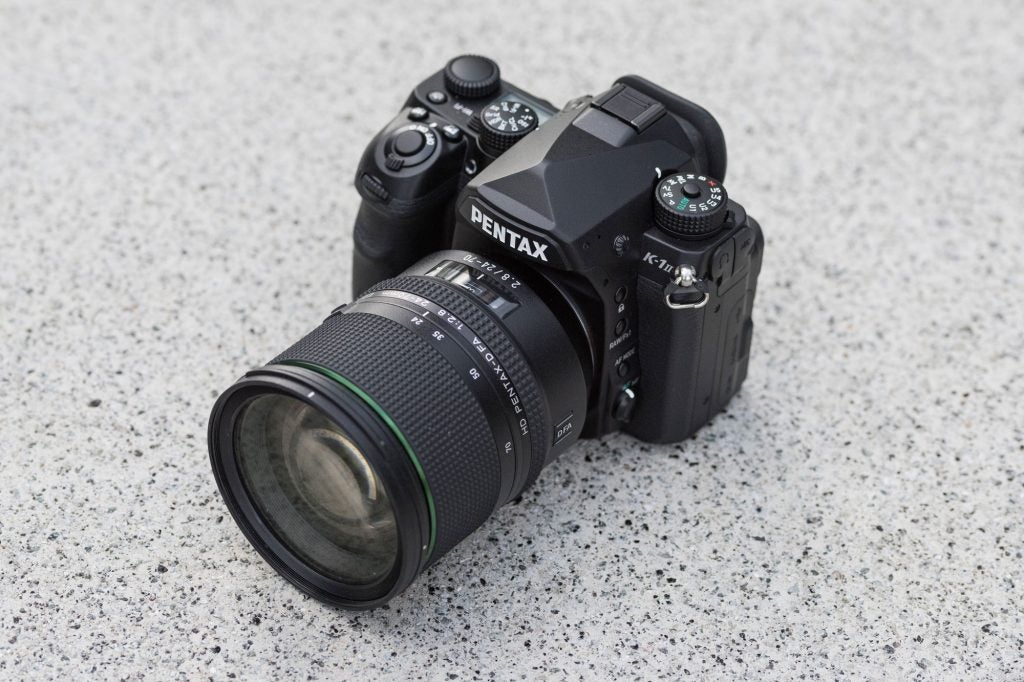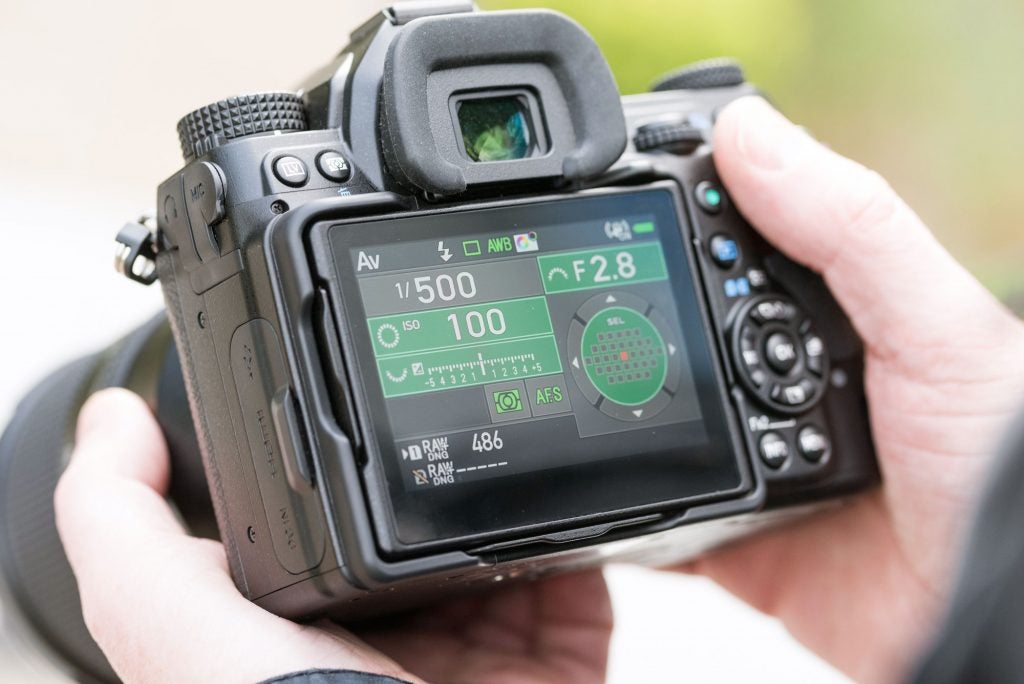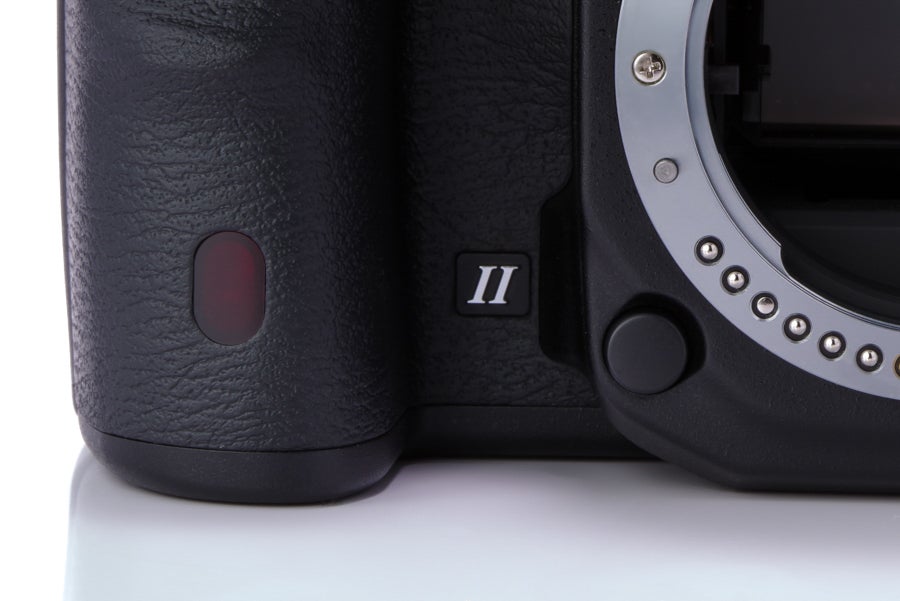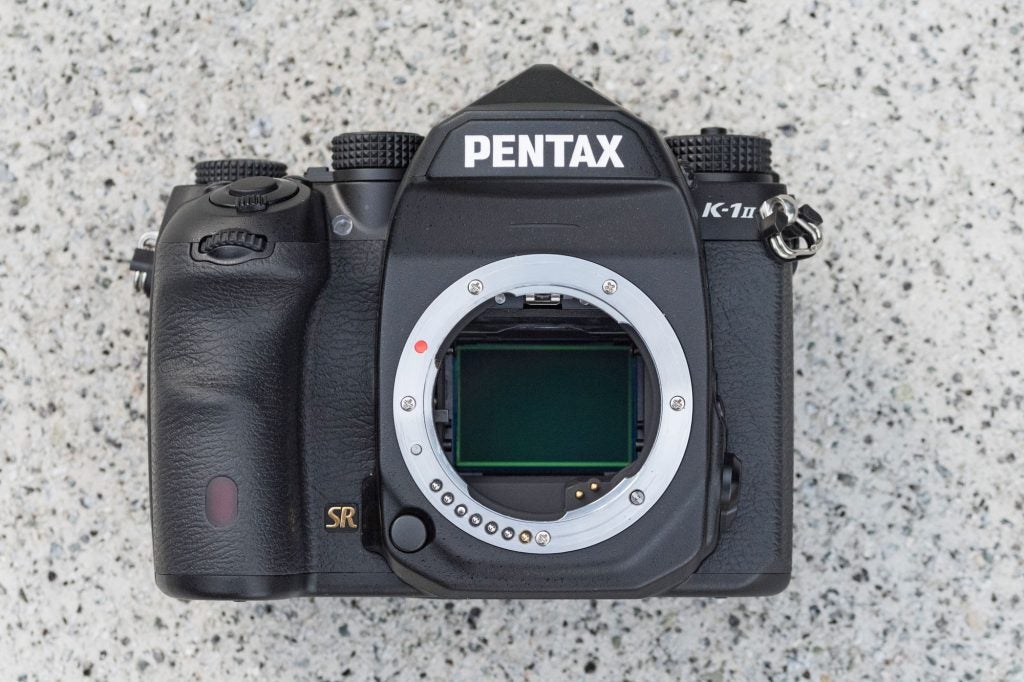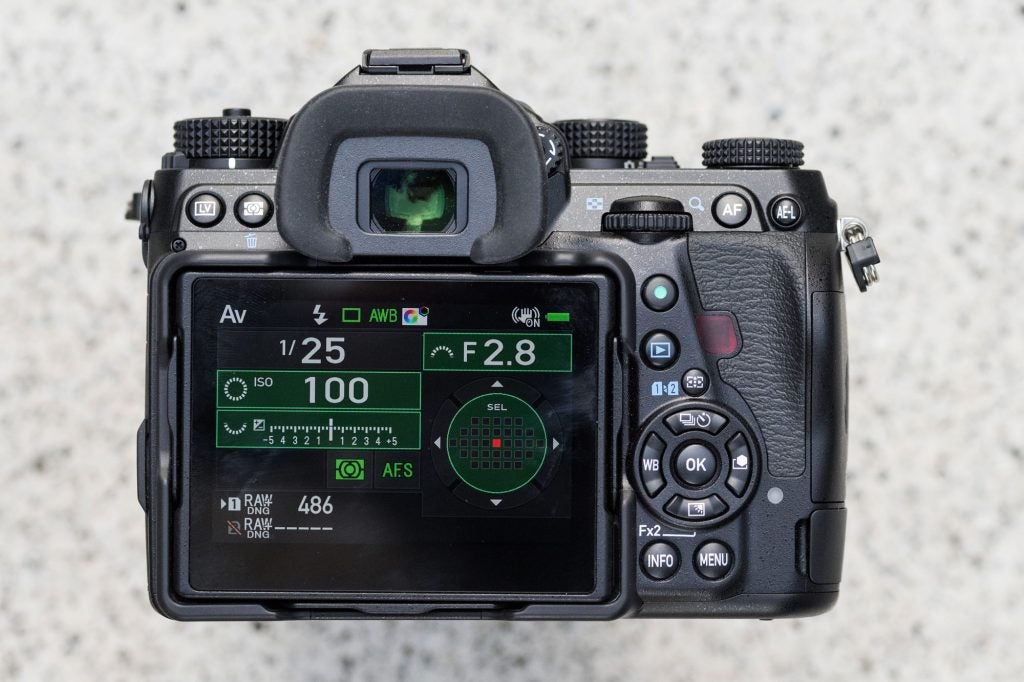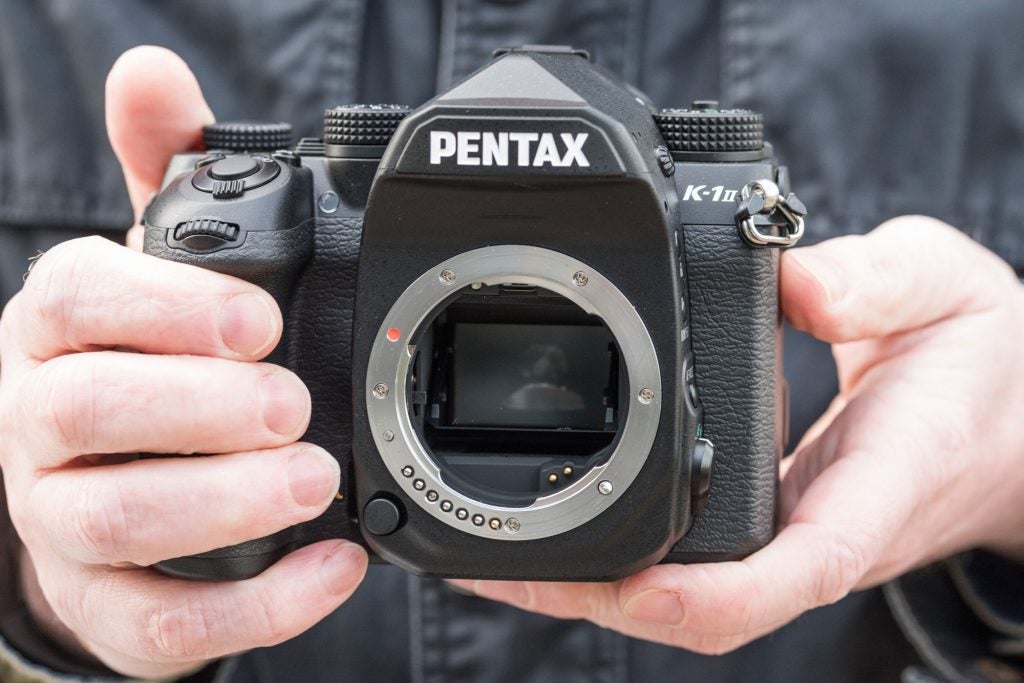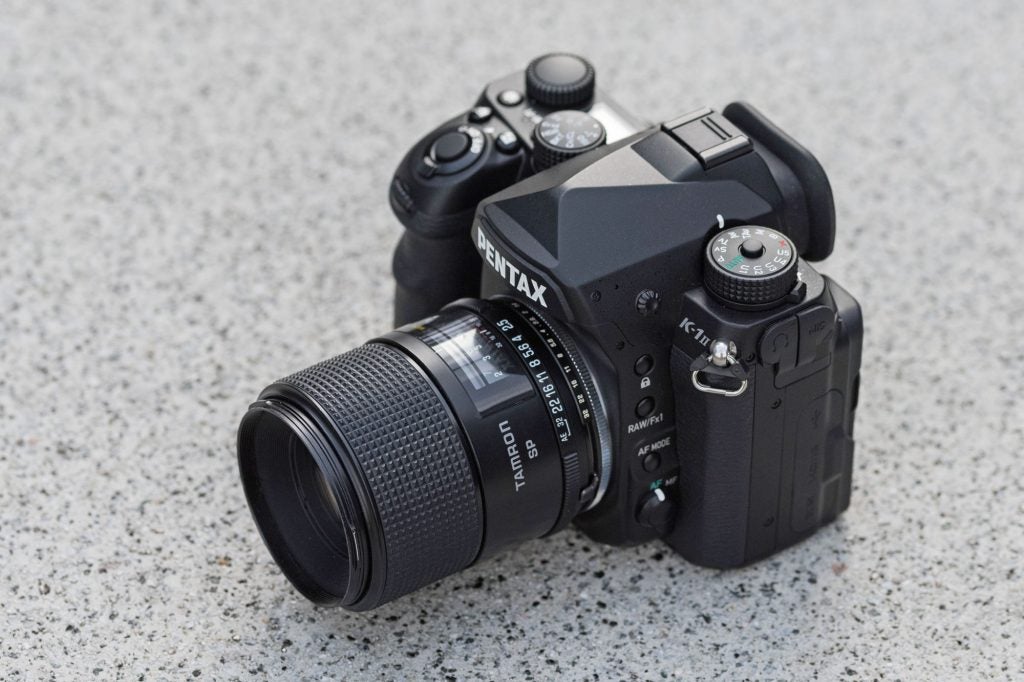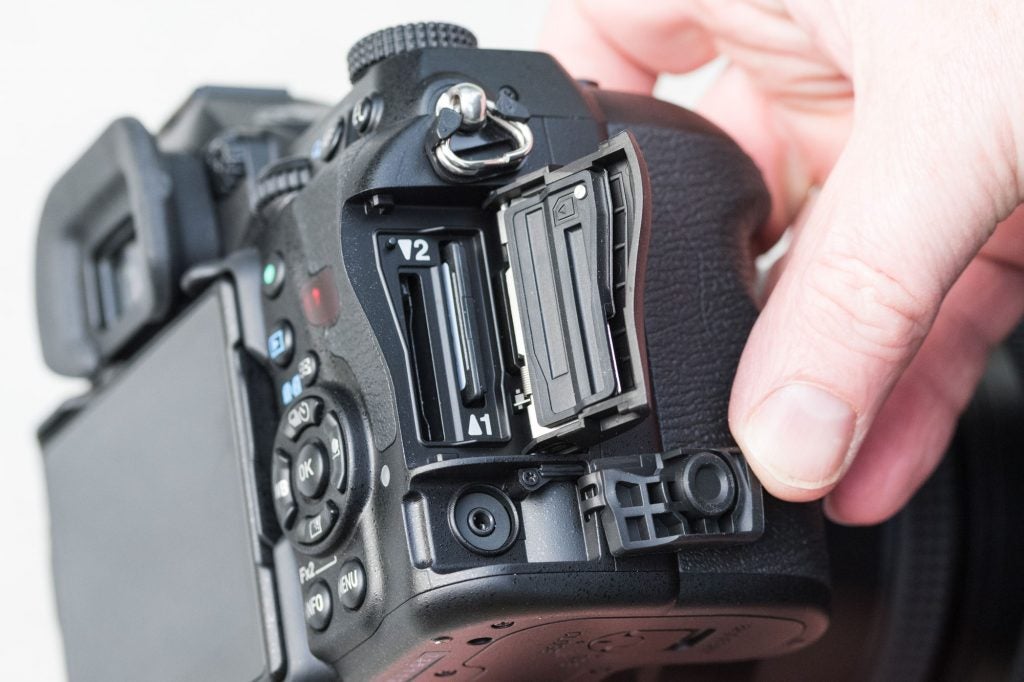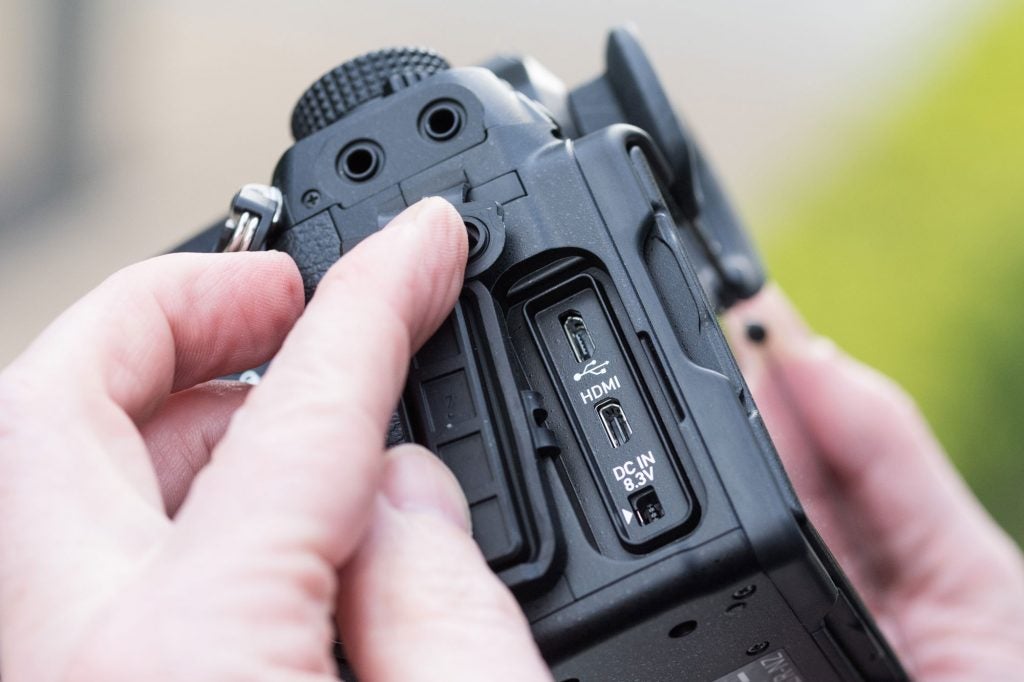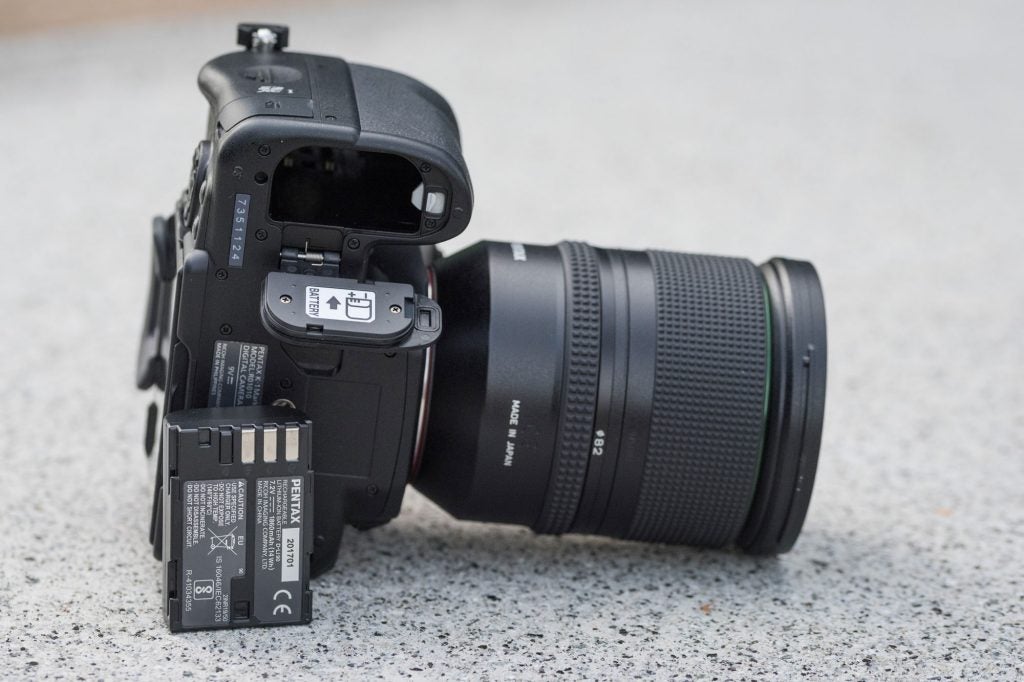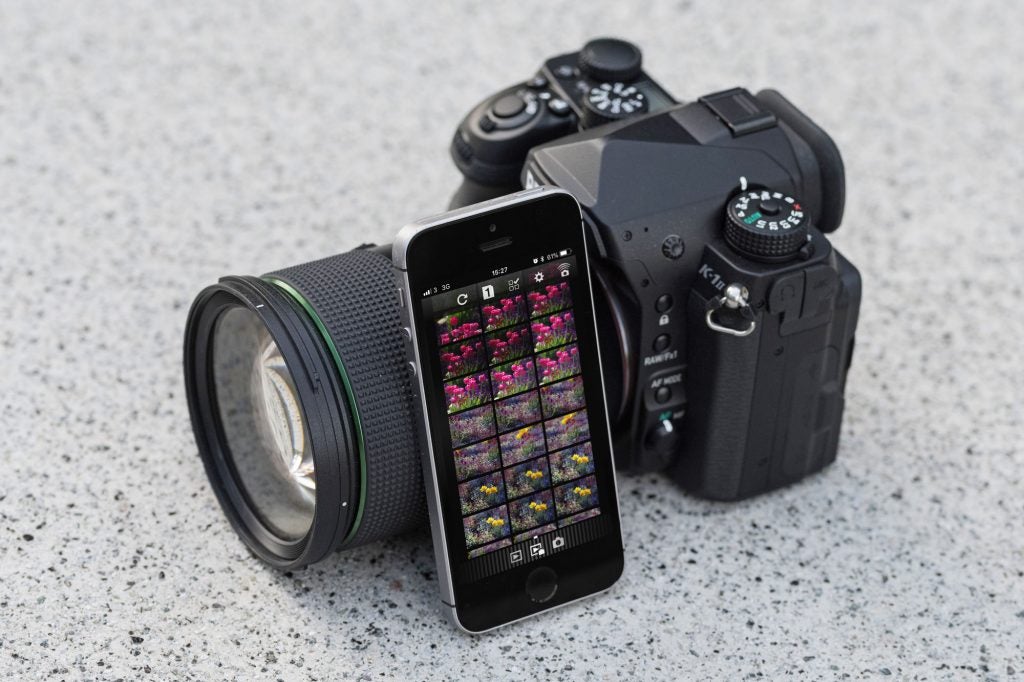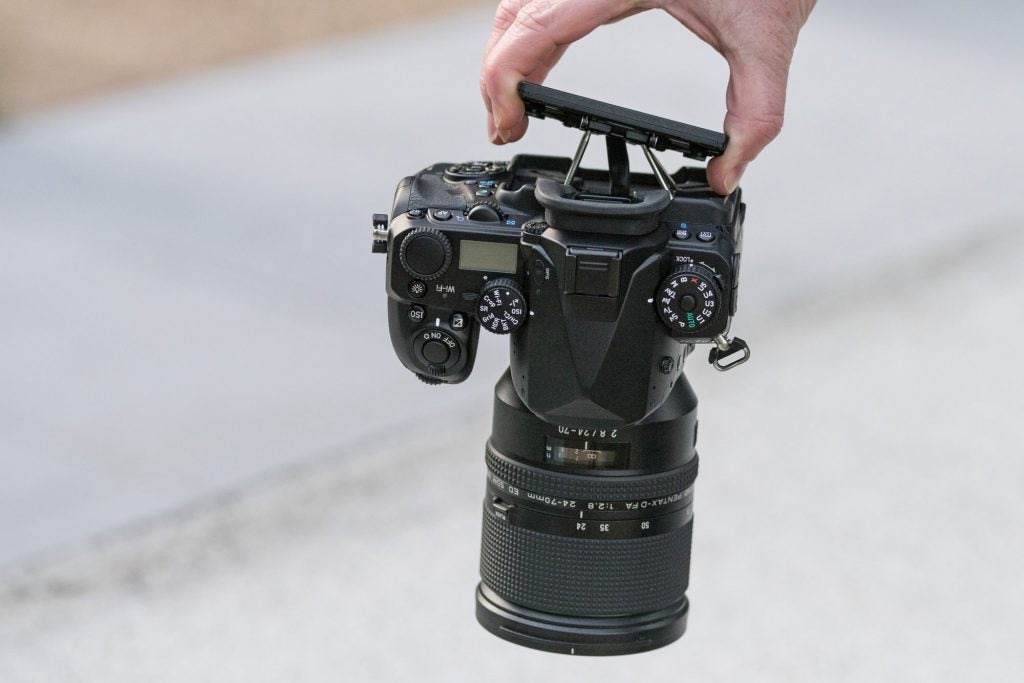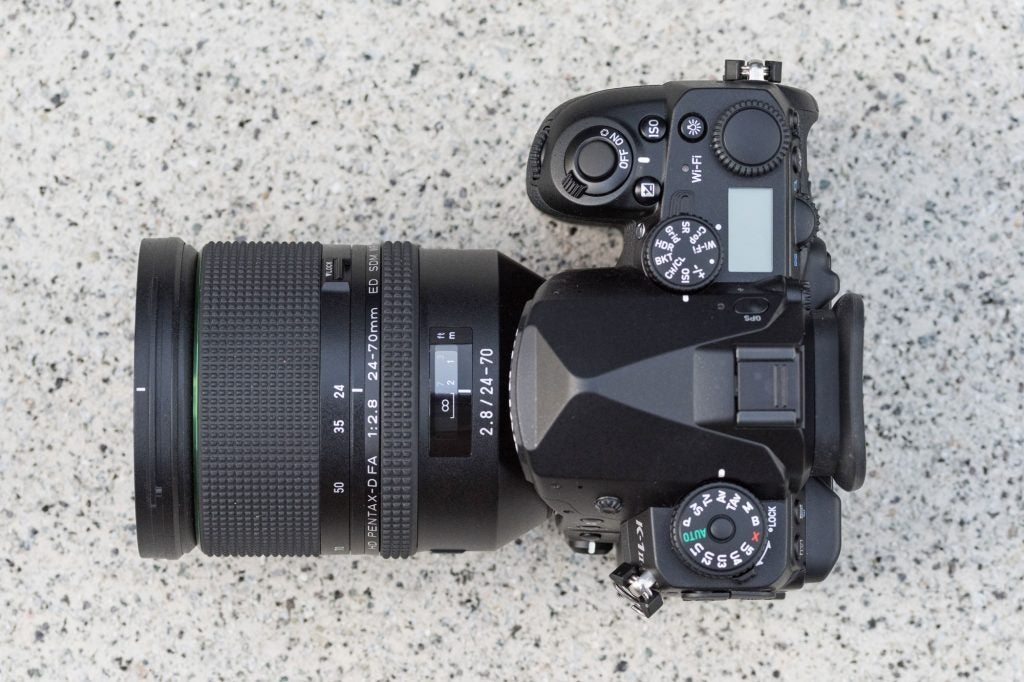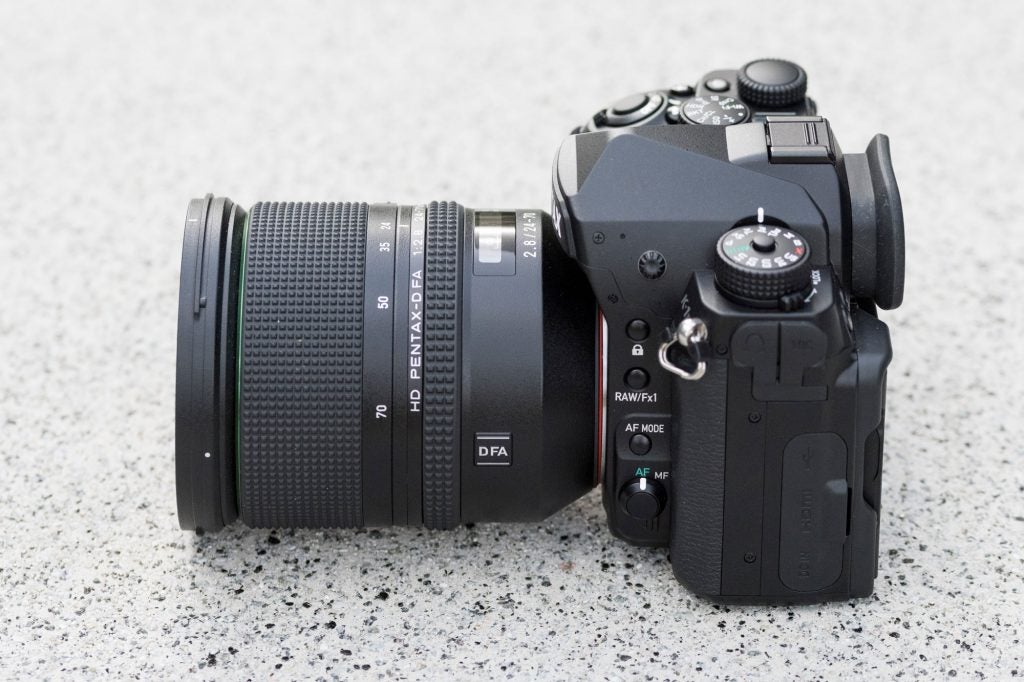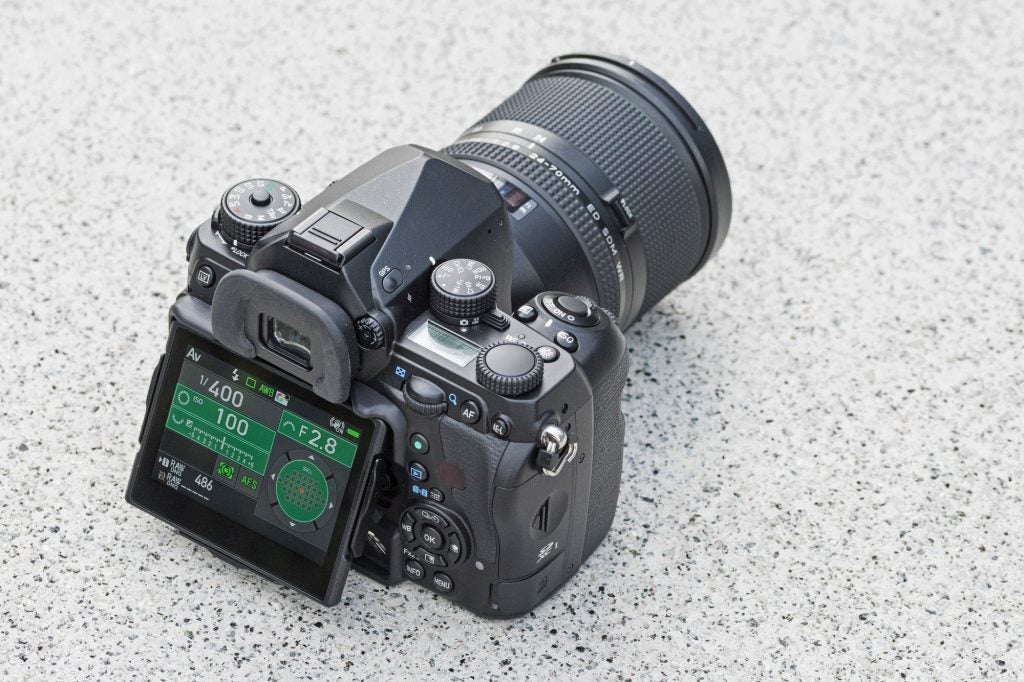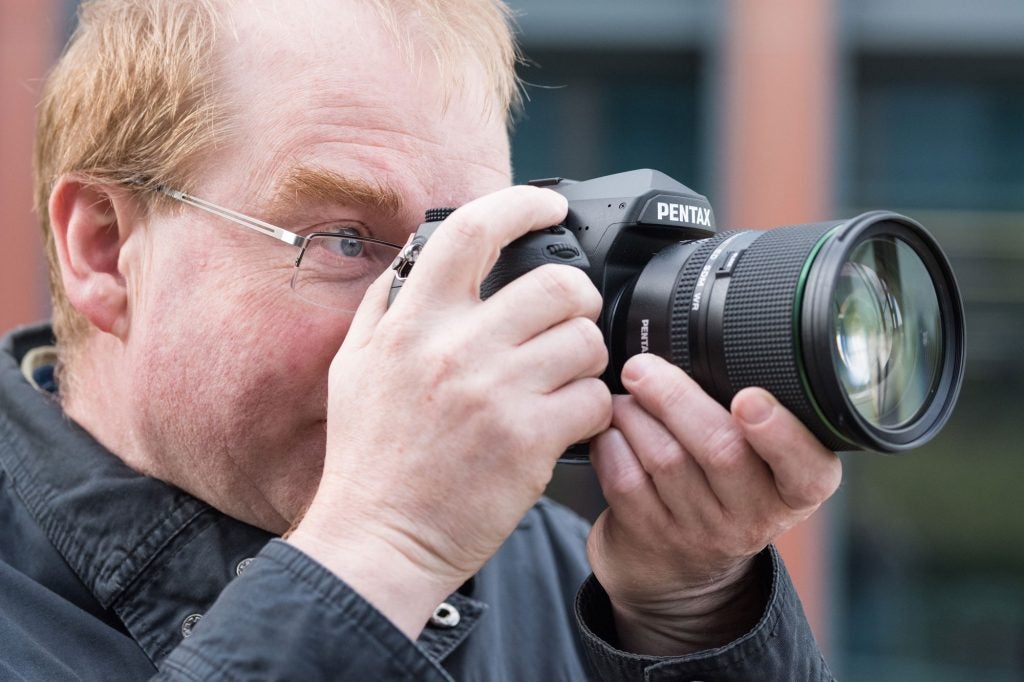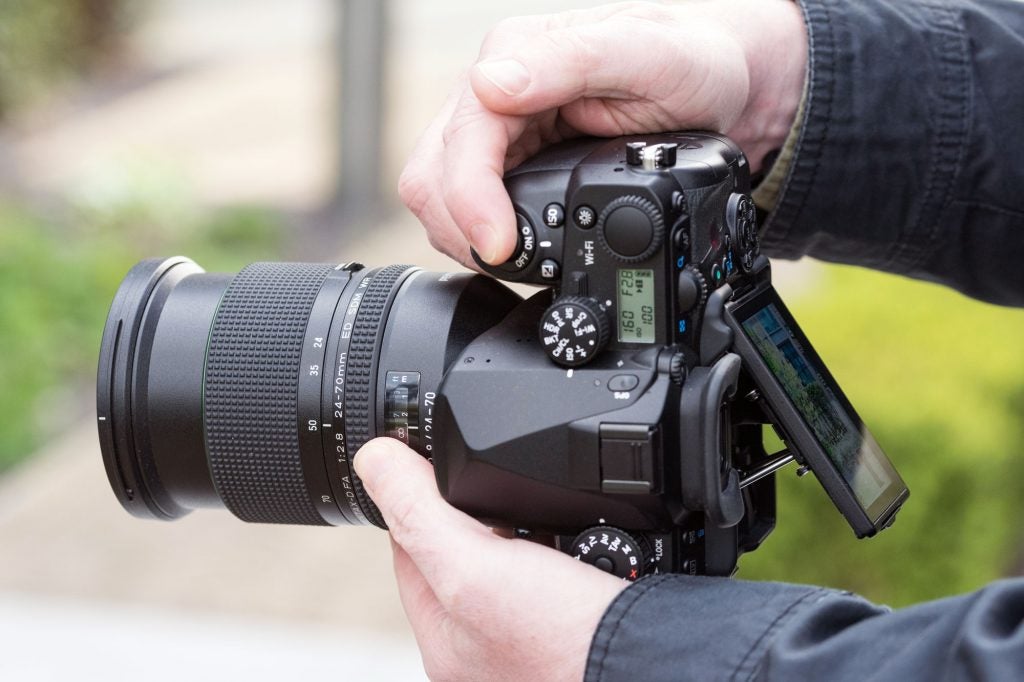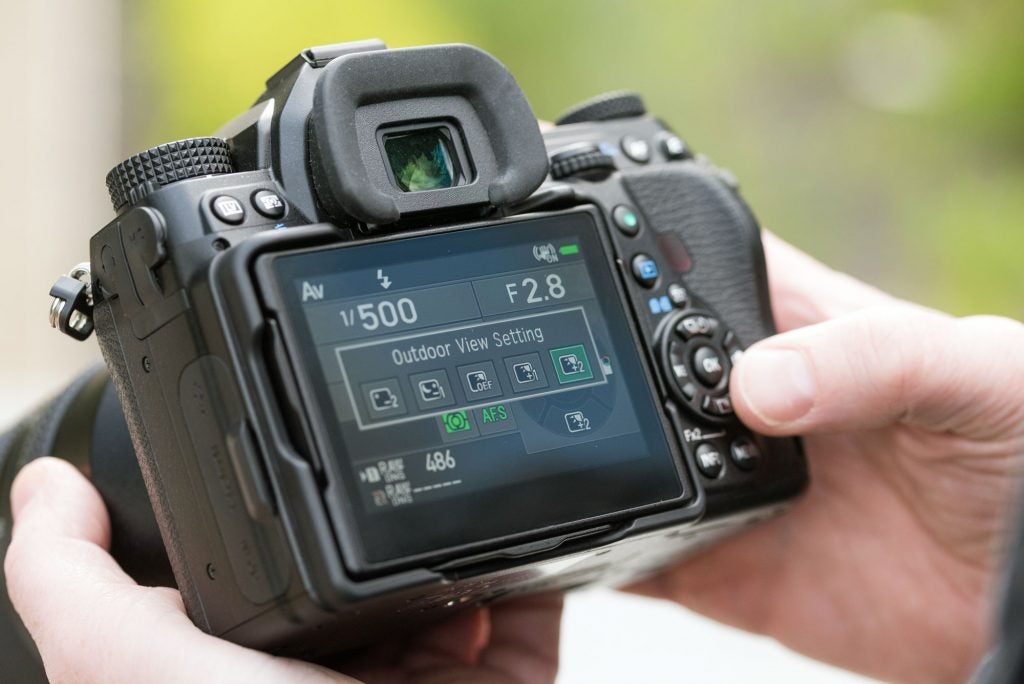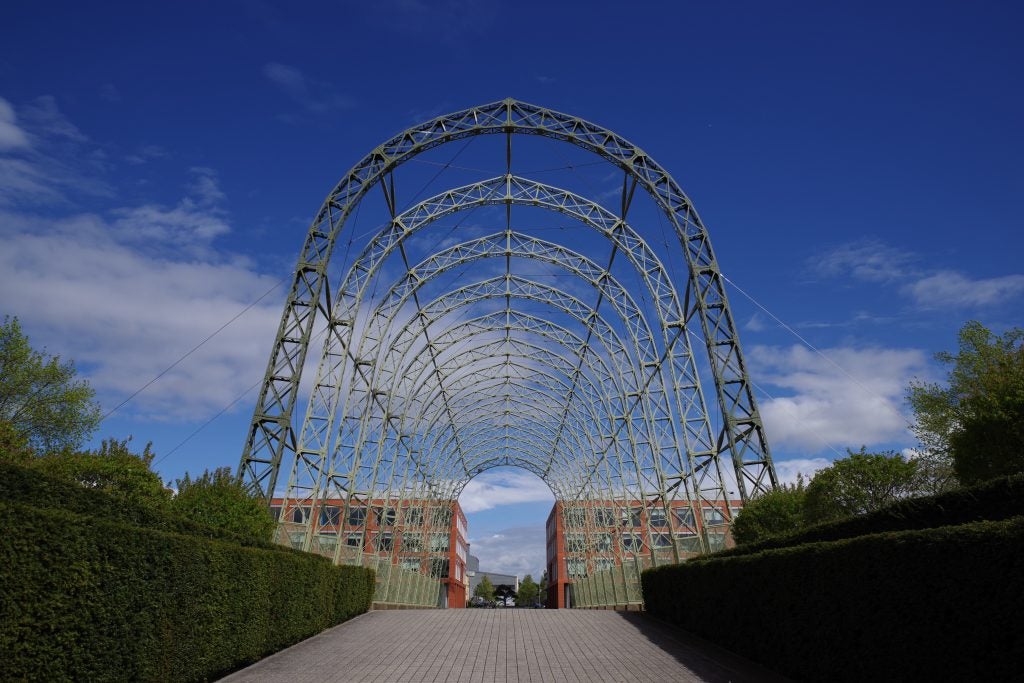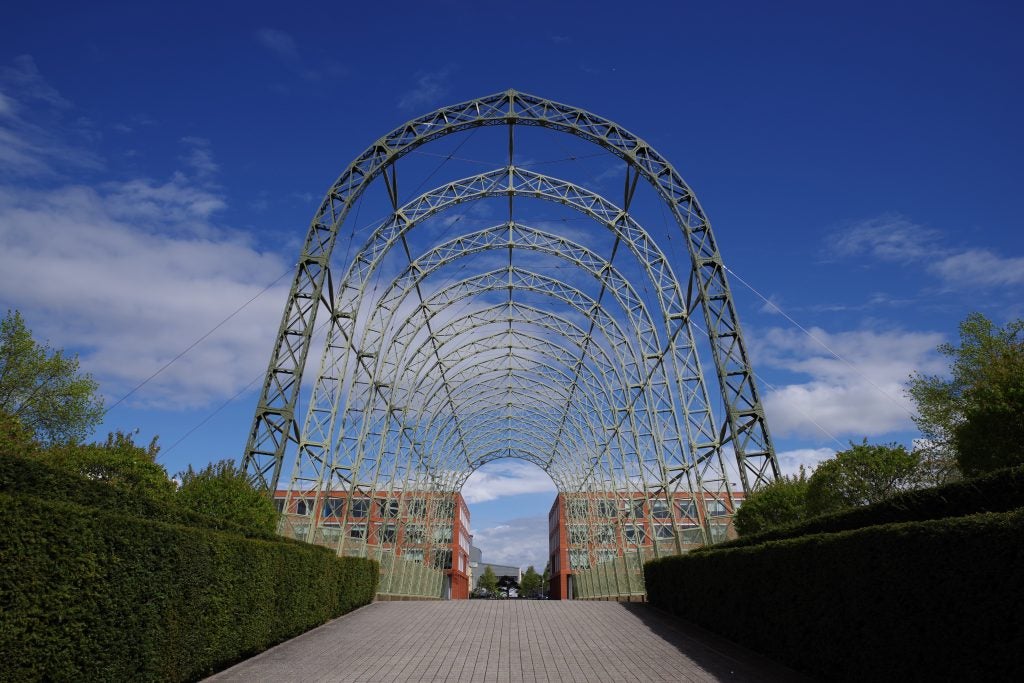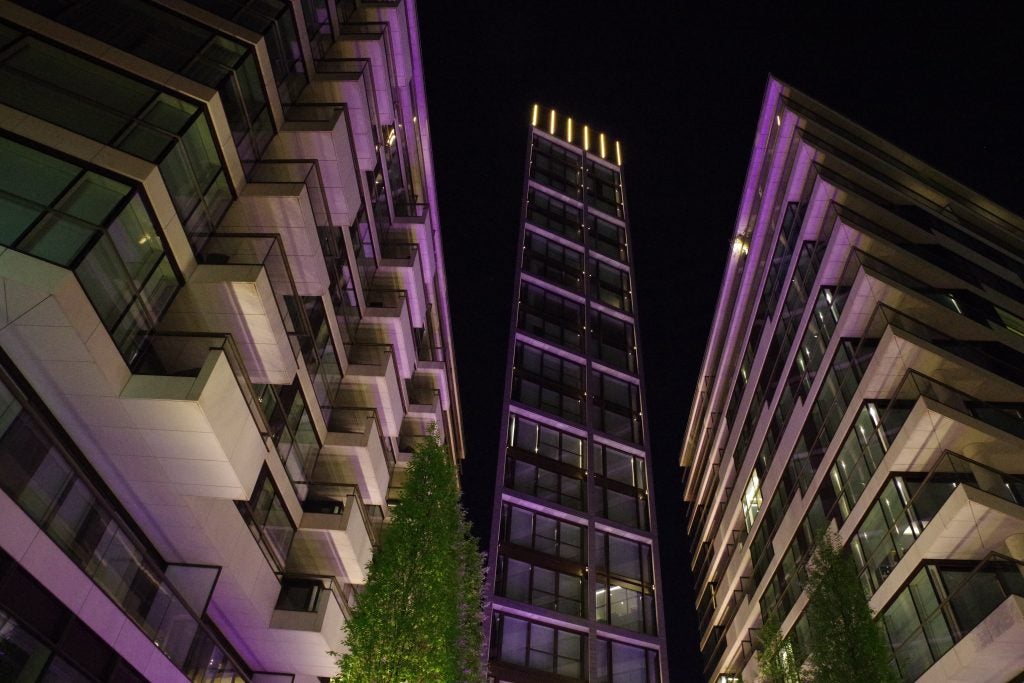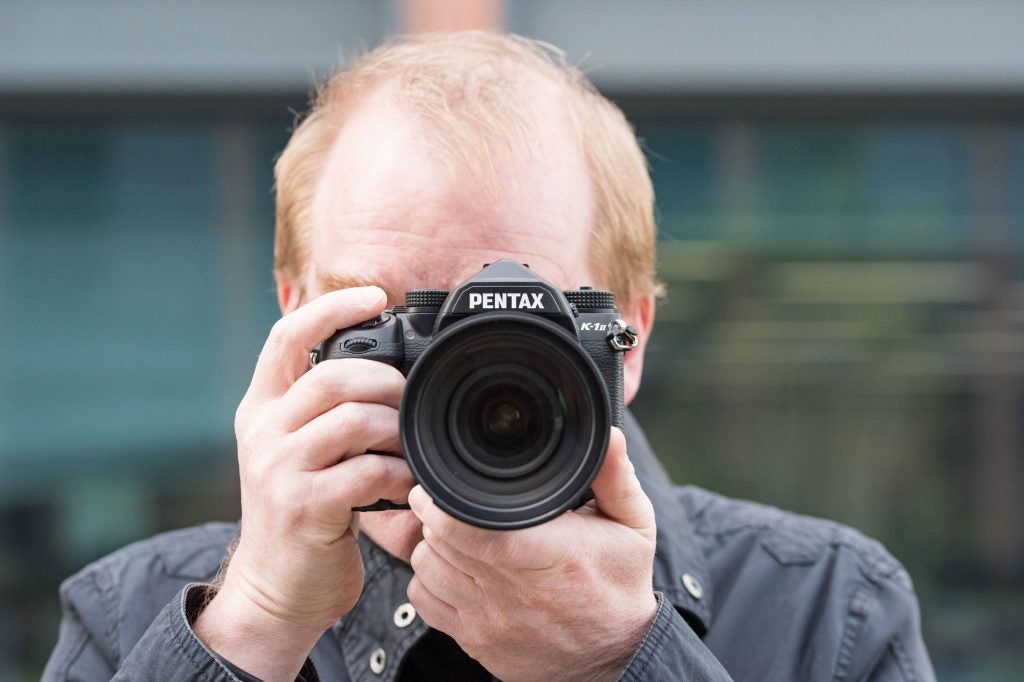Pentax K-1 II Review
A very minor update, but still a fine DSLR
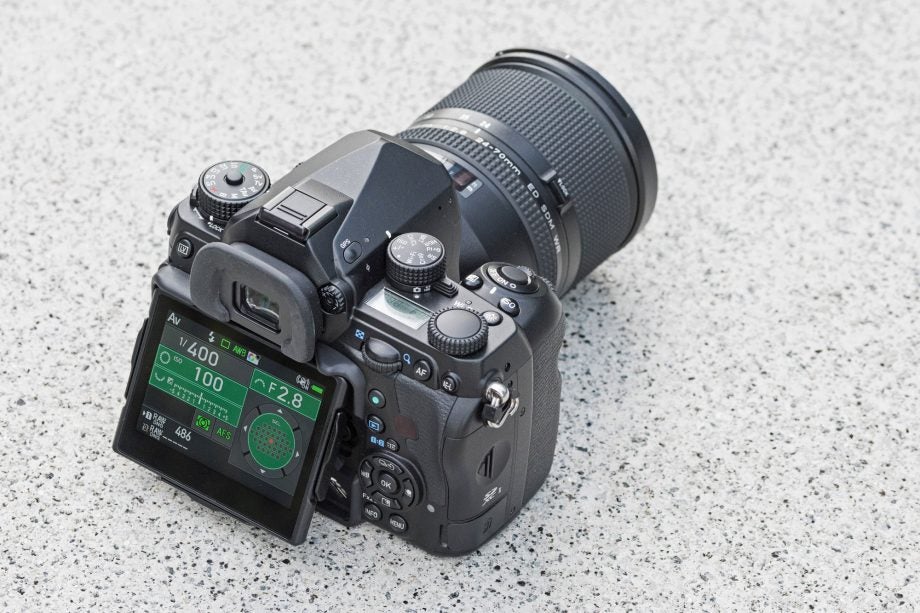
Verdict
What is the Pentax K-1 II?
The Pentax K-1 II is an upgrade to the original Pentax K-1 DSLR from 2016. Like its predecessor it features a 36-megapixel full-frame sensor, in-body 5-axis image stabilisation and a rugged design. It gains extended high-ISO shooting, a hand-held version of pixel-shift mode, and promises faster autofocus. It costs £1799, body-only.
When the original Pentax K-1 appeared a little over two years ago, it garnered a lot of excitement. Not only was it the first DSLR with a full-frame sensor to sport the iconic Pentax brand, but at £1600, it also offered remarkable value for money. Its 36-megapixel sensor had only previously been seen in substantially more expensive cameras such as the Nikon D810 and Sony Alpha 7R, and it included useful features such as 5-axis in-body image stabilisation and an unusual flexible-tilt rear LCD.
Now parent company Ricoh has given us a replacement, in the shape of the Pentax K-1 Mark II. But it’s very much an iterative upgrade, with relatively few new features. The main addition is an ‘accelerator unit’ that works in tandem with the PRIME IV image processor to offer an extended sensitivity range, which now goes all the way to ISO 819,200 compared to ISO 209,400 on the original. There’s also an intriguing-sounding version of Pentax’s Pixel Shift Resolution mode that works for hand-held shooting, and a promise of faster autofocus with improved subject tracking. But that’s the lot.
Of course the market hasn’t stood still since the K-1’s launch, but the Mark II still stands up very well in comparison to its closest competitors, the Canon EOS 6D Mark II and the Nikon D750, both of which cost almost exactly the same. However there’s a new kid on the block, in the shape of the mirrorless Sony Alpha 7 III, which has redefined our expectations of what a sub-£2000 camera can offer. Compared to these redoubtable foes the K-1 Mark II still offers higher resolution and maximum ISO settings, but is this enough to keep it relevant?
Pentax K-1 update service
Uniquely, existing Pentax K-1 owners can have their cameras upgraded to Mark II standard. For a fee of around £450, the main circuit board can be replaced with the new version from the K-1 Mark II, enabling the full set of updated features. The SR label on the front plate will also be replaced with a new ‘II’ badge to confirm that the work has been done.
Owners are advised to contact the service centre first for full details including cost, estimated service time and transportation. They’ll then need to download an application form, fill it in and send it off with their camera. The update offer runs from 21st May to 30th September 2018; full details can be found on Ricoh’s website.
Pentax K-1 II – Features
In most respects, the K-1 Mark II offers the same feature set as its predecessor. At its core is a 36.4-million-pixel full-frame CMOS sensor, which forgoes an optical low-pass filter to deliver the maximum possible detail. This usually comes with a risk of imaging artefacts, but Pentax has a unique solution. Enable its AA Simulator mode and the camera can use its in-body IS system to slightly blur the image projected onto the sensor to combat aliasing and moire, with a choice of strengths. If you’re not sure whether you need this anti-aliasing effect, the camera can shoot a set of exposures with and without.
Core photographic features are pretty solid, if unspectacular. The Mark II can shoot at 4.4fps at full resolution, with a 17-frame raw buffer; if this isn’t fast enough then switching to the 15-megapixel APS-C crop mode enables 6.4fps with a 50-frame buffer. Metering employs an 86,000 pixel RGB sensor, with multi-segment, centre-weighted and spot modes available.
Autofocus is provided by the 33-point SAFOX 12 module, which includes 25 cross-type points towards the centre of the frame. The focus points cover about half the image width and a third of its height, which is reasonable for a full-frame SLR but trounced by any mirrorless camera (or indeed most APS-C DSLRs). Switch to live view, and the K-1 Mark II offers contrast detection AF covering 75% of the frame width and height.
Shutter speeds range from 30 seconds to 1/8000sec, with 1/200sec flash sync. The mirror and shutter mechanism are pleasingly quiet and well-damped, and in the usual Pentax fashion, enabling the 2-second self-timer mode automatically engages mirror pre-fire to further reduce any risk of blur from mechanical vibrations. Delve into the menus and you’ll find a silent electronic shutter that enables more discreet shooting in live view, although the camera isn’t completely noiseless due to its mechanical aperture operation.
Based around the Pentax K mount, the K-1 Mark II is compatible with a huge range of lenses dating back to 1975. It’ll work best with autofocus lenses, of course, but will also be perfectly happy with manual-focus KA lenses that have electrical contacts to pass aperture information to the camera.
It can even be made to work with purely-mechanical K lenses, but only in manual-exposure mode using stop-down metering (which is best achieved by pressing the green button on the camera’s back). So if you have a cherished collection of film-era lenses, the K-1 Mark II will make the most of them. Some optics won’t resolve all the detail the sensor is capable of capturing, but that’s no reason not to use them – it just means you can’t expect to display or print your photos as large.
However, it’s the in-body IS system that delivers most of the K-1 Mark II’s best tricks. Most obviously, it promises sharper images at slow shutter speeds with almost any lens you can mount on the camera, giving up to 5 stops stabilisation. This means it works with lens types that aren’t usually stabilised, such as wide-angles and fast primes. It’ll even work with old, purely mechanical K-mount lenses: turn the camera on after changing lenses and it will prompt you to select the focal length for the IS system to work properly.
The Mark II also includes the Pixel Shift Resolution mode seen on many recent Pentax cameras. In its conventional form this requires the camera to fixed to a tripod, and makes four exposures while shifting the sensor precisely one pixel between each. This allows it to capture full-colour information at each point in the image, giving visibly higher detail. A Motion Correction option is also available, which aims to reduce image artefacts with subjects that move between exposures. But brand new on the Mark II is a hand-held pixel-shift mode, which I’ll examine in detail later.
Other clever features enabled by the stabilisation system include Astrotracer, which works with the built-in GPS unit to move the sensor for capturing sharp long-exposure photographs of star fields. It’s also possible to use the IS mechanism to fine-tune your composition when shooting from a tripod. Last but not least, there’s a rather brilliant function that can automatically level your images during normal hand-held shooting.
The K-1 Mark II’s rugged body is positively bristling with advanced features. Dual SD card slots are found behind a door on the handgrip, and you can either record to them sequentially, back up files to both simultaneously, or record raws to one and JPEGs to the other. There’s a built-in GPS unit; in addition to geo-tagging your images, it can record a log of your travels during the day. It’s turned on and off using a small button on the side of the pentaprism.
A receiver for an infrared remote control is built into front of the handgrip; more unusually, and usefully, there’s a second on the back from when you’re working from behind the camera. If you prefer a wired release, then the standard Pentax 2.5mm port is found on the side of the grip. A chunky rubber cover on the other side of the camera protects HDMI, USB and a power-in ports, while earphone and microphone sockets are found above. Finally, there’s a PC flash connector on the side of the prism.
A small LCD display on the top plate displays shutter speed, aperture, ISO, exposure compensation and battery status; it can be lit up by pressing the nearby button. Strategically-placed LEDs around the body can be used to light up the lens mount, card slots, remote release connector and rear controls, again via the top-plate button. This can be a real aid to low-light shooting. The externally-charged D-LI90 battery is good for 670 shots per charge, which is relatively low for a DSLR but should still be enough for most purposes.
Other features include high dynamic range shooting; independent shadow and highlight tonal range adjustment; in-camera lens corrections; a multiple exposure mode, and a intervalometer with a huge range of programmable options. In-camera raw development is available for re-processing your images after shooting, and built-in Wi-Fi allows you to copy images to your smartphone for sharing, or control the camera remotely using the Pentax Image Sync app.
Naturally video recording is onboard, but at Full HD (1920 x 1080) resolution and 30fps with purely contrast-detection autofocus, it’s a long way behind the 4K-enabled Alpha 7 III. You do at least get both microphone and headphone sockets, along with full manual control of exposure. Essentially it’s there if you need it, but it’s clear the camera’s focus is fundamentally on stills photography.
Pentax K-1 II – Build and handling
Pick up the Pentax K-1 Mark II and you’ll immediately find it’s a hulking brute of a camera; indeed at 1010g it’s marginally heavier than even the pro-spec Nikon D850. Its body is relatively narrow for a full-frame DSLR, but also unusually deep, measuring 86mm from the front of the prism to the back of the LCD. This reflects the need to house the in-body image stabilisation unit, along with the bulky screen articulation mechanism.
Pentax has a reputation for rugged, weather-sealed bodies, and the K-1 Mark II offers the kind of build quality usually reserved for more expensive cameras. Its magnesium alloy body feels absolutely rock-solid, indeed the quality of its (over)engineering is demonstrated by the fact that you can pick up the camera by the articulated LCD screen and shake it around, with absolutely no ill-effect. The large handgrip is coated with thick, textured rubber and provides a very secure hold.
Almost every available surface of the body is covered with buttons, dials and switches. Unlike other DSLRs, the K-1 Mark II has three dials you can use for changing exposure settings, rather than two: Ricoh has cottoned-on to the fact that you might want equally quick access to ISO and exposure compensation as to shutter speed and aperture, a revelation that has so far escaped Canon and Nikon. You can configure the front and rear dials to your own personal preference separately for each exposure mode, and then change the function of the top-plate dial on the fly using the adjacent selection dial.
It’s just a shame the K-1 Mark II doesn’t have a joystick controller for moving the focus point; instead you’re supposed to use the d-pad. The complication is that you also use the d-pad for changing drive mode, white balance, colour mode and LCD brightness, toggling between the alternative functions using a small button above the ‘up’ key. It’s quite easy to lose track of which mode the d-pad is in, and end up inadvertently changing settings when you wanted to move the focus point.
Other buttons on the body give direct access to metering and autofocus modes, and there’s one on the side for temporarily turning on raw recording. There’s even a button that can be used to turn off the other buttons, or disable the control dials, if you wish.
Yet more functions can be accessed quickly via the Info button on the back, which calls up an onscreen quick menu. Only a couple of buttons are customisable, but that’s no problem as it’s difficult to think of anything you might assign to them that’s not already easily accessible.
This complex control layout all takes a bit of getting used to, but after using it for a while, it turns out to be a really quick way of working. It’s definitely not for the faint-hearted, but if you’re stepping-up from a high-end Pentax APS-C body such as the K-3 II (as many buyers will be), most of the interface will be familiar anyway. However I can’t help but feel that Ricoh could benefit by making a simpler, more approachable full-frame model too.
A small top-plate LCD shows basic shooting information, with the rear LCD used to display the main settings. One oddity is that if you turn off this screen, then pressing a function button or spinning the top-plate dial won’t re-activate it, even temporarily. This means that it’s possible to change certain settings such as HDR mode or continuous shooting speed without the camera telling you what you’ve done.
Pentax K-1 II – Viewfinder and screen
The K-1 Mark II is unashamedly a traditional DSLR, designed to be used primarily with the optical viewfinder. Fortunately the finder is very good, with a magnification of 0.7x and almost 100% coverage of the scene. The image is reasonably bright, and there’s just about enough ‘snap’ to focus manually with f/2.8 lenses. What you don’t get, of course, is the accurate preview of exposure, colour, white balance and depth-of-field that’s offered by a good electronic viewfinder.
Full exposure information is displayed beneath the focusing screen, and you can choose to overlay electronic level and gridline displays if you want. However the autofocus points can be difficult to see when you’re moving between them, as they’re outlined in black. But like almost anything else on the camera this behavior can be changed, and I set the camera to highlight the active AF point in red whenever I moved it.
Below the viewfinder is the 3.2in LCD, which is mounted on one of the most complicated articulation systems ever devised. The unit is attached to the camera via four metal struts, allowing it to be tilted up, down, left or right. An additional hinge at the top of the support mechanism enables the screen to be set horizontally for waist-level shooting.
This flexible-tilt screen is particularly handy when shooting in live view with the camera on a tripod. Unlike the tilt-only screens on the Nikon D850 and Sony Alpha 7 III, it continues to be useful when you’re shooting in portrait format, although here the maximum tilt angle up or down is rather limited, at less than 45 degrees. So it’s not as flexible as the fully-articulated unit found on Canon’s EOS 6D Mark II (or indeed the Pentax K-70), and the mechanism adds considerable bulk to the back of the camera.
Thankfully the LCD itself is very good, being sharp enough to check focus of your shots, and accurately colour calibrated. One really neat touch is that you can adjust the brightness between five very different settings using the down button of the d-pad, with the brightest being useful in strong sunlight, while the darkest won’t blind you at night. The screen isn’t touch sensitive, though, which these days feels like an anachronism.
Pentax K-1 II – Autofocus
Ricoh has used the same SAFOX 12 autofocus module as the original K-1, which provides 33 focus points grouped towards the centre of the frame, including 25 cross-type points that can detect both horizontal and vertical detail. Flicking a switch on the lens throat selects between auto and manual focus, while pressing a button above it and spinning the control dials selects between single-shot and continuous AF, and auto or manual selection of focus area. You can choose between using just a single point or surrounding points as well, which can be useful when tracking focus on moving subjects.
In principle the autofocus is now faster, with improved tracking, but without a K-1 to test side-by-side I couldn’t verify any improvement. Suffice to say the Mark II generally worked well with the 24-70mm f/2.8 lens I had for testing. While it’s noticeably a bit slower focusing than rival cameras, it should be absolutely fine unless you plan on regularly shooting fast-moving subjects. However, having become accustomed to the ability of mirrorless cameras to focus anywhere in the frame, I found the restricted AF area coverage that’s inherent to full-frame DSLRs to be rather limiting.
Switch to live view and you get a much wider focus area, covering 75% of the frame height and width. Unfortunately the contrast detection autofocus simply isn’t very fast, while also being more prone to hunting than I’d expect. But it’s usable for static subjects and is of course inherently accurate, because the image sensor itself is being used for focusing. Live view also provides the most accurate possible manual focus, achieved by pressing the OK button to engage magnified view.
Pentax K-1 II – Performance
As you’d expect from a £1800 camera, the Pentax K-1 Mark II is a pretty accomplished performer. It’s responsive in almost every aspect of its operation, with only a few exceptions. My biggest irritation is that it takes a second or two to wake up when you half-press the shutter button after auto power-off, which can result in missed shots. Also, if you have instant review enabled for checking images after they’ve been shot, the camera ignores the control dials until playback has been dismissed, so you can’t change settings quickly for a second shot. But if you find this to be a problem, simply turn off instant review.
Metering and auto white balance are both pretty reliable, courtesy of the 86,000px RGB sensor, and in general the K-1 Mark II returns attractive JPEG files that are colourful without being lurid. If you want to pep up its output, there’s a good array of JPEG colour modes available. On dull days, though, it tends to underexpose slightly, meaning images often benefit from a little positive exposure compensation or a lift in post-processing.
One key advantage of the K-1 Mark II over other DSLRs is its in-body image stabilisation. I found this worked well, and using the Pentax 24-70mm f/2.8 I could get consistently sharp shots hand-held at shutter speeds as low as 1/4sec at wideangle, or 1/15 sec at telephoto, equating to around three stops benefit. The big advantage, of course, is that it works with every lens, although unlike optical systems or in-body stabilisation on mirrorless cameras, you don’t get the benefit of a stabilised viewfinder with telephoto lenses.
Image quality is excellent, with the 36MP sensor delivering as much detail as you’ll see from any camera that costs under £2000. Dynamic range is impressive too, meaning that you can extract lots of extra detail from dark areas of the image when post-processing raw files, especially at low ISOs. But the Mark II’s the additional high ISO settings are completely spurious, giving little more than an unidentifiable mess. Indeed I’d be loathe to shoot at anything much above ISO 12,800.
Pentax K-1 II – Hand-held pixel-shift mode
Probably the Mark II’s most intriguing feature is its hand-held pixel-shift mode. This is enabled by setting Pixel Shift Resolution function to ‘Image Stabilisation On’. The camera will then take four exposures and align them to produce a composite file. Here’s an example file.
It’s clear from the moment you start shooting that this mode isn’t doing the same thing as conventional pixel-shift. For a start, the camera uses the mechanical (rather than electronic) shutter to shoot the four frames, in noticeably quicker succession. But it then spends an inordinate amount of time aligning the exposures and processing the file, locking you out from taking another picture for 30 seconds or more. As with conventional pixel-shift you end up with a raw file that’s typically 170MB, compared to 45MB for a single shot, meaning it contains the data from all four exposures. As yet, though, Adobe Camera Raw doesn’t understand how to process it to anything more than a conventional image from the first frame.
In hand-held mode the camera clearly isn’t full-colour sampling each pixel, instead it’s aligning and averaging four conventional image files. But because of the slight differences between each hand-held shot, in principle it’s able to extract more detail overall. In practice, the sharpness improvement is much less clear-cut compared to the tripod-based pixel shift modes, although with favourable subjects, it’s just about visible. If you stare at the comparisons below, the crops on the right have marginally better-defined details. But I’m not convinced it’s anywhere near significant enough to justify the inconvenience.
100% crop comparison: pixel-shift mode on right
Conventional pixel-shift, meanwhile, behaves much the same as on previous Pentax DSLRs. It gives stunning results with static elements, revealing visibly higher detail and colour gradation. However it’s essential to engage motion correction whenever part of the scene may be moving (which in practice means anything shot outdoors), as otherwise you’ll get ugly artefacts that offset any advantage of the extra resolution.
Pentax K-1 II – Image quality
While the Mark II’s image quality isn’t obviously changed from the original, it’s still the very fine indeed, and overall the best you can get for the price. Indeed with static subjects amenable to pixel-shift mode, the K-1 Mark II will outperform any other full-frame camera, aside from the £3200 Sony A7R III.
At low ISOs the sensor delivers superb detail and dynamic range, while high-ISO image quality is pretty good too, with quite acceptable results at ISO 12,800. But I’d avoid going much higher than this, and found the newly-added ISO 409,600 and ISO 819,200 settings to be completely unusable.
Resolution
At low ISOs, the K-1 Mark II can resolve an impressive level of detail, with our resolution chart showing clean separation of lines at up to 4600 lines per picture height. At this point aliasing becomes apparent, while false detail is rendered at higher frequencies due to the lack of a low-pass filter. Resolution is maintained well as the sensitivity is raised, with over 4200 l/ph still measurable at ISO 1600, and very nearly 4000l/ph at ISO 12800, which is as much as any of its 24MP competitors can achieve at best. Even at ISO 102,400 it registers around 2800 l/ph, but everything falls apart at higher settings. When looking at the 100% crops below, multiply the numbers below the lines to get the resolution in lines per picture height (lph).
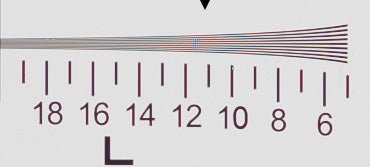
Pentax K-1 II, Raw, ISO 100
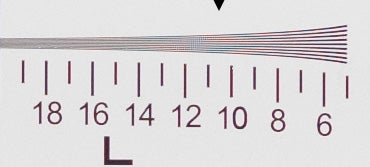
Pentax K-1 II, Raw, ISO 1600
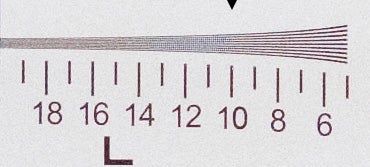
Pentax K-1 II, Raw, ISO 12800
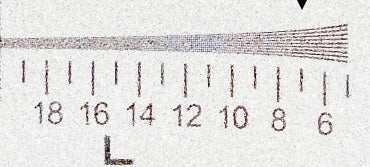
Pentax K-1 II, Raw, ISO 102400

Pentax K-1 II, Raw, ISO 204800

Pentax K-1 II, Raw, ISO 819200
ISO and noise
When set to its lowest ISO 100 setting, the K-1 Mark II delivers extremely clean, detailed images that surpass almost anything else at its price point. Noise only starts to become visible beyond ISO 800 when examining images close-up, and detail is still maintained very well at ISO 3200. After this things progressively degrade, with ISO 25,600 losing all fine detail and suffering from reduced colour saturation. By ISO 51,200 files are barely usable and just like the original K-1, higher settings should really be avoided. The top two ISOs seem to be little more than a marketing gimmick, giving extremely noisy images in which the subject is barely even recognisable.
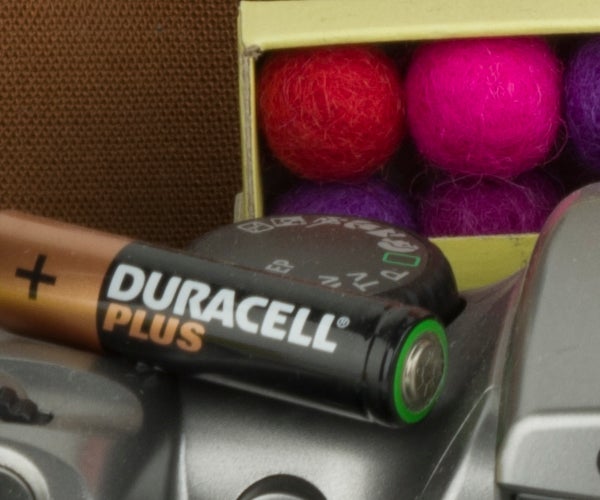
Pentax K-1 Mark II, RAW, ISO 100
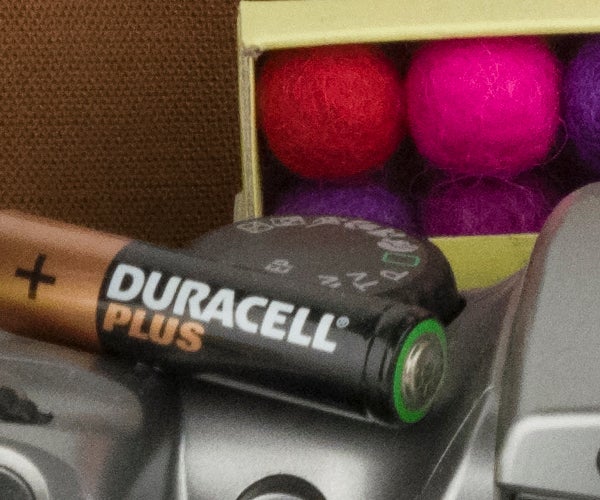
Pentax K-1 Mark II, RAW, ISO 3200
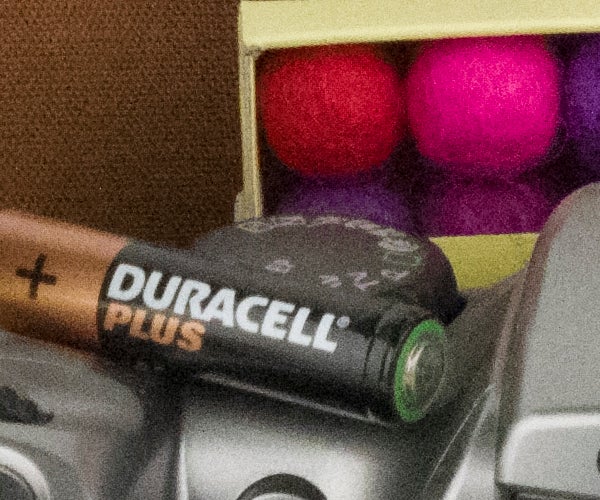
Pentax K-1 Mark II, RAW, ISO 12800

Pentax K-1 Mark II, RAW, ISO 51200

Pentax K-1 Mark II, RAW, ISO 204800

Pentax K-1 Mark II, RAW, ISO 819200
Why buy the Pentax K-1 II?
With the Pentax K-1 Mark II, Ricoh has taken its flagship full-frame DSLR and added a few small improvements. The result turns out to be a minor update, but a timely reminder of the K-1’s qualities. I’m sure this camera would be much more highly appreciated if it had a Canon or Nikon badge on the prism.
Indeed with its rugged body, extensive controls and excellent image quality, the K-1 Mark II can lay claim to being the most capable sub-£2000 DSLR on the market, unless you specifically need high-speed shooting and rapid autofocus tracking. It would be a great choice for landscape photography, for anyone prepared to cart around a 1kg body and a set of lenses.
However, almost anyone thinking of buying a £1800 camera will already be heavily invested in a favoured brand. But it makes little sense for Canon or Nikon users to switch systems, especially as the range of full-frame Pentax lenses currently available new is quite limited. Third-party lens support is diminishing too: it’s a sign of the times that Sigma now makes its latest Art primes in Sony E-mount, but not Pentax K.
So in reality, the market for the K-1 Mark II is pretty much limited to existing Pentax users. But for anyone using an APS-C DSLR, it’s a really significant upgrade, both in terms of image quality and functionality.
Verdict
For anyone who has a suitable collection of K-mount lenses and wants to make the step up from APS-C to full-frame, the Pentax K-1 Mark II is very easy to recommend. But I don’t think it’s worth upgrading from the original K-1; there’s too little extra to justify the cost.

